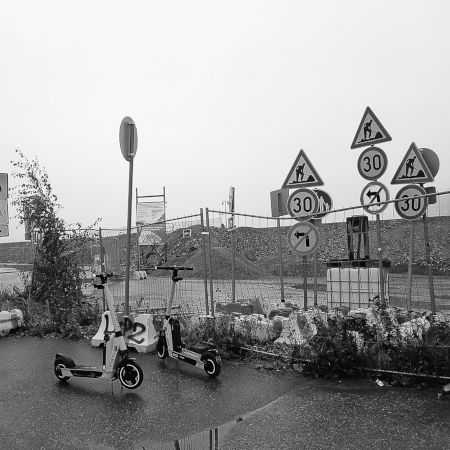Deploy /
Exploring Social Impact
An introduction to experiences, perceptions and change related to media architecture projects
Social impact assessment (SIA) is an established practice in many fields and a requirement for many policy, development and infrastructure projects. The goal is to understand how people experience change directly or indirectly because of a specific intervention and, when possible, alter a project to ensure positive change. SIA helps to assess if project objectives are achieved and to document other spin-off effects, whether intentional or unintentional, positive or negative. Evaluation can be speculative (anticipating future impacts of a project); formative (understanding impacts of project planning and construction as they occur); or summative (short- and long-term impacts of completed projects). Concerns in SIA—like community engagement and empowerment, sense of place and cultural heritage preservation—resonate with media architecture practices. For example, SIA could increase understanding of: the impacts of community consultation for local residents during the design process; how content resonates with audiences with different levels of media literacy; or the consequences of artistic and activist works for the people, places and issues they aim to address.
SIA prioritises human experience and wellbeing over other areas, such as economic or technological impacts. It is increasingly assessed in relation to environmental impacts, with some defining social impact as inclusive of changes to community and environment. Importantly, social change in this context is considered subjective—it refers to lived experiences, to how an intervention is felt or perceived. For the researcher, this requires an openness to different views of impact and the valuing of diverse voices and expertise. Stakeholders of media architecture projects might include creators, funders and target audiences, but their interpretations of impact provide only part of the picture and may conform to strategic priorities and existing indicators of success. Further exploration can reveal others affected beyond the immediate scope of the project, such as nearby residents (including non-humans) and business owners, passers-by or those responsible for the maintenance or decommissioning of an installation. One way to define social impact is in relation to scale and context. For example, the study could look at stakeholders of media architecture in a private, interior space, a certain neighbourhood, a local ecosystem or an international event.
There are a variety of approaches to evaluating social impact. For example, the Social Return on Investment (SROI) method1 maps inputs (project resources), outputs (what the project does/creates) and outcomes (short- and medium-term changes resulting from the project) in order to understand the impacts (how changes affect people over time). By using money as a proxy for social value, SROI makes it easier to demonstrate and compare impacts where value has been difficult to quantify, particularly in community organisations. More recently, the UK Design Council2 began developing methods to evaluate the social and environmental impacts of design projects. Their case study model invites practitioners to use qualitative (e.g. interviews, user stories) and quantitative (e.g. statistics, surveys) methods to assess the direct impacts of design projects as well as their ‘invisible ripple effects.’ Qualitative methods help to make sense of quantitative data and interpret social impact.
Understanding social impact requires a holistic view of the context and lifespan of a project. Acknowledging the experience and values of different stakeholders can help to ensure that project intentions reflect the priorities of the affected communities and increase positive social impacts.
Method Steps
-
Collect background information about: the site before the intervention so you can see how the site has changed (e.g. maps, photographs, videos of how the space was used); and the project you are studying (e.g. proposals, artist’s statements, photographs, media coverage, reviews). Note the project’s goals, intended audiences, outcomes, impacts and measures of success. What impacts was the project supposed to have on people? How would you know, see or feel if these impacts were realised?
-
Define the parameters of your study:
-
Create a simple timeline showing the project phases from planning through development, implementation, and current status.
-
Visit the site. Who comes into contact with the project? How was the site altered because of the project? How does this affect stakeholders (e.g. experience of place, everyday life, patterns of behaviour)?
-
List the stakeholders involved in each phase. Consider who was directly or indirectly implicated in the creation, reception, maintenance (and dismantling?) of the project.
-
Choose a specific group of stakeholders to interview. Consider who was the intended audience or beneficiary and who might have been overlooked. Pay particular attention to the project’s legacy and how stakeholders may experience long-term impacts.
-
-
Interview a few stakeholders about their experiences and perceptions of the project:
-
How were they involved? How does it intersect with their lives? What do they know and feel about the project?
-
Have attitudes or behaviours changed because of it? Can they describe or show changes in how they did something before, during and after their encounter with the project? Has the project altered their relationships to places or people? What do those changes mean to them? Are they positive, negative? How significant is the impact for them?
-
What is their opinion of the project’s intended impacts and whether they were realised? Can they point you to other stakeholders or impacts you hadn’t considered?
-
-
Compare your findings to the information you collected in step 1. What has changed in terms of the site, who uses the space and how? How closely do your findings about social impacts align to the original intentions of the project? Return to the project timeline – how could social impact have been increased for interviewees? How might their communities have benefited more from the project?
